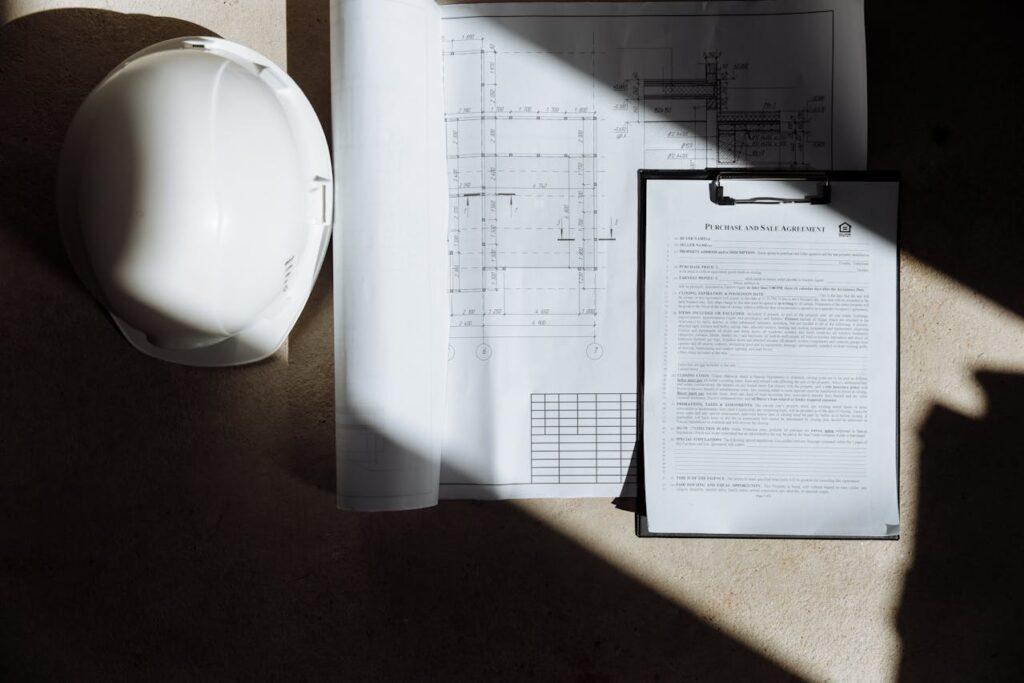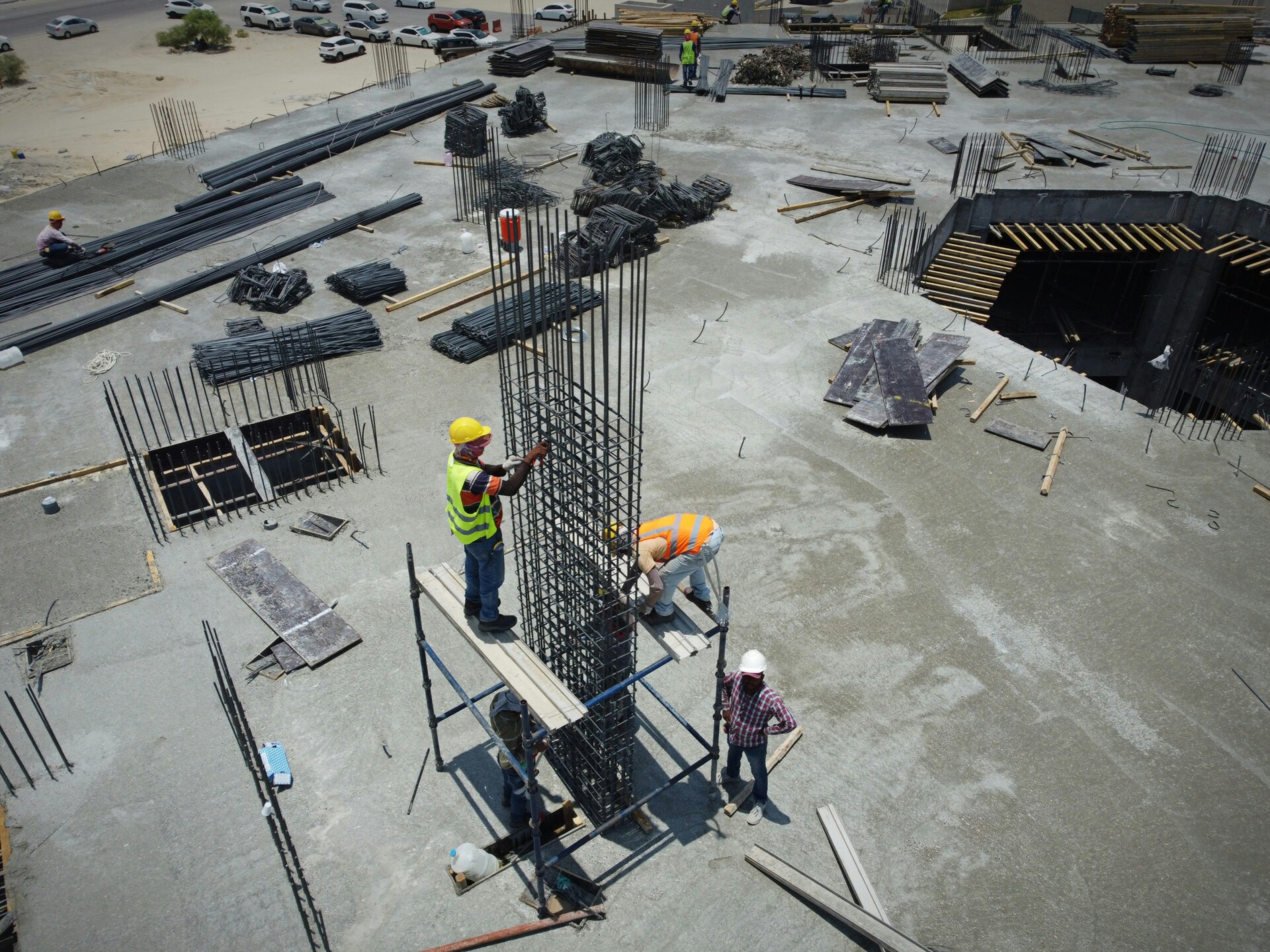Who pays for full build-out depends entirely on what gets negotiated in the lease. The answer varies by property type, market conditions, and tenant strength.
A full build-out transforms raw space into a move-in ready environment customized for your business. This complete interior transformation includes partition walls to define spaces, flooring systems, ceiling finishes, HVAC distribution, plumbing rough-in and fixtures, electrical systems and lighting, millwork and built-ins, and specialized equipment mounting. Payment responsibility splits between landlord, tenant, or both parties through various negotiated arrangements that reflect each project’s unique scope and market dynamics.
What Are The Common Ways A Full Build-Out Gets Funded?

We see five primary funding structures in commercial construction. Each model allocates risk and control differently between landlord and tenant.
The Tenant Improvement Allowance (TIA) dominates the market as the most common option. Landlords provide a set dollar amount per square foot that tenants can use toward construction costs. This structure gives tenants control over design choices while capping the landlord’s financial exposure. We typically negotiate TIAs ranging from $15 to $60 per square foot depending on market conditions and project complexity.
Rent discounts offer another funding path. The landlord reduces monthly rent for a specified period, and tenants use the savings to finance their build-out work. This arrangement shifts cash flow timing but maintains tenant control over the construction process. The discount period usually equals the calculated improvement costs divided by monthly rent.
Building standard allowances provide landlords with more project control. The landlord offers a predefined menu of finish options and oversees the construction work directly. Tenants select from available choices and pay for any upgrades beyond the standard package. This model works well when landlords want to maintain consistency across the building while still providing customization options.
Turnkey build-outs place full responsibility on the landlord. We deliver a complete, move-in ready space based on tenant specifications, with tenants typically covering only minor items like furniture. The construction costs get embedded into the lease rate, making upfront cash requirements minimal for tenants. This arrangement requires detailed specifications upfront to prevent scope disputes later.
Tenant-funded overages appear in every funding model except turnkey. When project costs exceed the agreed allowance per square foot, tenants cover the difference. We structure these overages with clear approval processes to prevent budget surprises during construction.
Complete landlord funding remains rare in practice. Office projects commonly see 30 to 50 percent landlord contribution, while retail spaces often receive smaller allowances. The negotiation determines the final split based on market leverage, lease terms, and project scope. Every funding structure requires careful documentation to define responsibilities and limit cost overruns.
How Do Turnkey, TI Allowances, And Standard Allowances Differ?
Each funding model distributes financial responsibility and project control differently. Understanding these differences helps developers and property owners choose the approach that aligns with their timeline, budget constraints, and desired level of oversight.
Turnkey Build-Out Structure
With a turnkey build-out, we see the landlord shouldering responsibility for major improvements and delivering a move-in ready space. The tenant typically covers minor items like furniture, technology equipment, and moveable fixtures. Construction costs often get embedded into the rental rate rather than appearing as separate line items.
Quality standards and project specifications require clear definition upfront since the tenant has limited control once construction begins. The landlord manages contractor selection, timeline, and construction oversight. This approach works well for tenants who prefer minimal involvement in the construction process but need assurance that the space will meet operational requirements.
TI Allowance Framework
A TI allowance operates as a landlord contribution toward tenant improvements, typically calculated per square foot. The tenant oversees design development, hires the construction team, and manages the build-out process within the allowance parameters. Any costs exceeding the allowance become the tenant’s responsibility.
Allowance rules commonly exclude furniture, fixtures, and equipment unless specifically negotiated otherwise. The tenant maintains project control, from initial design through final inspections. Reimbursement usually occurs in phases tied to construction milestones, requiring the tenant to manage cash flow during the project.
Building Standard Allowance Model
Building standard allowances present tenants with a predefined menu of finishes and improvement options. The landlord oversees the construction work and covers costs for standard selections. Tenants pay for any upgrades beyond the established standards.
This model gives landlords control over construction quality and timeline while offering tenants some customization choices. The scope definition remains more rigid compared to other approaches, but it provides cost predictability for both parties. Standard allowances work effectively in multi-tenant buildings where uniform finish levels help maintain property value.
The choice between these models depends on how much project control the tenant wants, available capital for upfront costs, and the complexity of space requirements. Each structure addresses different risk tolerance levels and operational preferences in commercial construction projects.
Which Factors Decide Who Pays And How Much?

Market conditions create the foundation for every negotiation. In a tenant’s market, landlords compete with higher allowances to fill spaces. In a landlord’s market, tenants have less leverage and typically receive smaller contributions.
Tenant creditworthiness drives allowance size directly. Strong financial statements signal lower risk, encouraging landlords to invest more in the space. Established companies often secure better terms than startups or businesses with limited credit history.
Lease term length influences the investment equation. Longer commitments justify higher allowances since landlords recover costs over extended periods. A ten-year lease typically commands more generous funding than a three-year agreement.
Space size affects both total dollars and per-square-foot rates. Larger tenants often negotiate better allowances due to their significant rental commitments. However, the complexity and scope of work matter more than raw square footage.
Building class determines baseline expectations. Class A properties in prime locations typically offer higher allowances to maintain competitive positioning. The condition of the space creates additional variables in the cost equation.
First-generation shell spaces require substantial investment to become functional. These raw spaces need complete HVAC, electrical, plumbing, and interior systems. Second-generation spaces with existing improvements need less work, reducing the required allowance.
Scope of work and finish level affect final costs significantly. Basic finishes cost less than premium materials and custom millwork. Specialized requirements like medical suites or laboratory spaces demand higher allowances due to technical complexity.
Landlords rarely fund 100% of build-out costs across any property type. For office properties, we typically see landlord contributions ranging from 30% to 50% of total costs. Retail properties often receive smaller landlord shares due to the specialized nature of tenant improvements that primarily benefit the specific business rather than future tenants.
What Should The Lease And Work Letter Specify To Control Cost Risk?
A thorough work letter acts as your construction blueprint within the lease agreement. We approach every project knowing that undefined terms and missing details create cost disputes later. Clear documentation at the contract stage prevents the majority of tenant improvement conflicts we see in the field.
Start with precise scope definition. The work letter should detail exactly what construction work the allowance covers, down to specific systems and finishes. Include quality standards that reference industry specifications or particular product lines. Vague language like “commercial grade” or “builder standard” leaves room for interpretation that leads to change orders.
Document Allowance Coverage And Exclusions
Define allowance exclusions explicitly. Most tenant improvement allowances exclude furniture, fixtures, and equipment unless specifically negotiated otherwise. Low-voltage systems like data cabling and security often fall outside standard coverage. Specialty equipment installations typically require separate funding arrangements.
We document these exclusions clearly because assumptions about coverage create budget overruns. When tenants expect allowances to cover items that landlords consider excluded, projects stall while parties negotiate additional funding. Clear exclusions prevent these delays.
Establish Construction Management Authority
Specify who manages construction and selects contractors. In tenant-controlled projects, document the tenant’s right to hire their preferred general contractor and design team. For landlord-managed work, establish the landlord’s contractor selection process and any tenant approval rights.
Include contractor qualification requirements if applicable. Some landlords maintain preapproved contractor lists, while others require specific insurance levels or bonding capacity. We find that documenting these requirements upfront prevents contractor disputes during construction.
Structure Overage And Reimbursement Terms
Detail how cost overages beyond the allowance get handled. Establish whether overages require tenant funding before work proceeds or if work can continue with payment due at completion. Include any interest rates that apply to landlord-funded overages and the amortization schedule.
Define reimbursement timing and documentation requirements. Specify what supporting documents landlords need for allowance disbursements, such as paid invoices, lien waivers, or completion certificates. Set timeframes for landlord review and payment to maintain project cash flow.
Include Approval Processes And Timeline Requirements
Establish approval sequences for design submissions and construction milestones. Define review periods for architectural plans, permit applications, and change requests. Include consequences for missed approval deadlines to keep projects moving forward.
Assign responsibilities for permits, inspections, and punch-list completion. Specify which party handles building permit applications, inspection scheduling, and final certificate of occupancy requirements. Document punch-list procedures including response timeframes and completion criteria.
Timeline requirements should include project start dates, substantial completion deadlines, and any penalty structures for delays. We include weather day allowances and force majeure provisions to account for circumstances beyond either party’s control.
Conclusion And Next Steps

Full build-out payment comes down to negotiation between all parties. Success depends on selecting the right funding model for your project scope, timeline constraints, and market leverage. Whether pursuing a TI allowance, turnkey arrangement, or standard allowance package, we approach each discussion with clear project requirements and realistic budget expectations.
Documentation drives project success. We ensure lease agreements and work letters specify scope boundaries, quality standards, and project control responsibilities. Critical details include allowance coverage limits, overage payment procedures, and punch list verification processes. Early team alignment between ownership, design professionals, and construction partners maintains budget discipline and schedule adherence throughout the build-out process.
Contact EB3 Construction to discuss your commercial build-out requirements and funding strategy.




